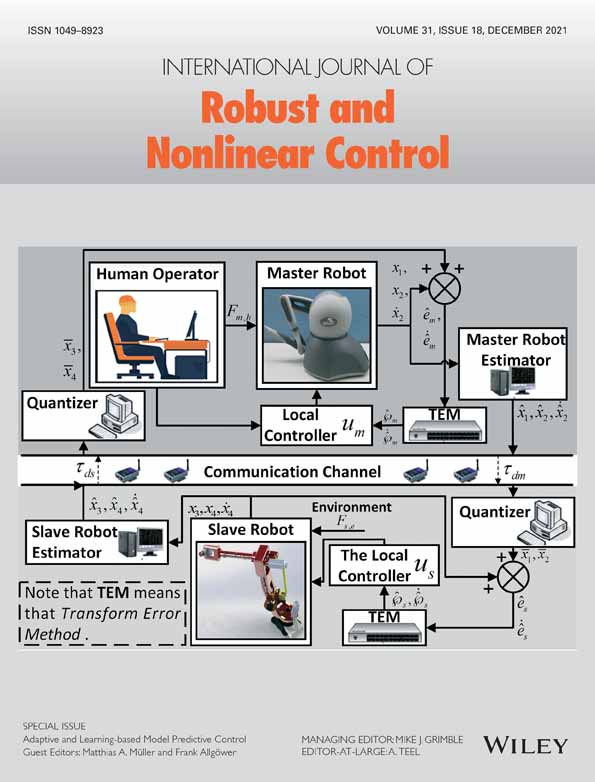Finite-time fault detection for multiple delayed semi-Markovian jump random systems
Funding information: National Natural Science Foundation of China, 62003061; 51777022; 62022044; 62103066; The third batch of special grants of China Postdoctoral Science Foundation, 2021TQ0392; Jiangsu Natural Science Foundation for Distinguished Young Scholars, BK20190039
Abstract
This work focuses on the problem of finite-time multiple delay-dependent filter-based fault detection (FD) and fault-tolerant control (FTC) for semi-Markovian jump random nonlinear systems subject to state and input constraints. There are model uncertainties, multiple time-varying delays, nonlinear dynamics as well as faults in these systems. This study is the first time to try. In addition, this article both considers stochastic finite-time boundedness and input–output finite-time mean square stabilization. A semi-Markovian jump filter, a semi-Markovian jump controller and a fault weighting system are developed to achieve FD and FTC. Then, an augmented closed-loop nonlinear system can be established. Moreover, multiple delay-dependent sufficient conditions are produced by means of stochastic Lyapunov function in this framework of linear matrix inequalities. Finally, an example is shown to bring out the effectiveness of the method addressed in this study.
CONFLICT OF INTEREST
The authors declared that they have no conflict of interest to this work.
Open Research
DATA AVAILABILITY STATEMENT
Data sharing is not applicable to this article as no datasets were generated or analyzed during the current study.



 control for stochastic T-S fuzzy systems via integral sliding-mode approach
control for stochastic T-S fuzzy systems via integral sliding-mode approach control for a class of uncertain switched neutral systems
control for a class of uncertain switched neutral systems control and filtering for uncertain Markovian jump systems with time-varying delays
control and filtering for uncertain Markovian jump systems with time-varying delays filtering for semi-Markovian jump linear systems with sojourn time dependent transition rates
filtering for semi-Markovian jump linear systems with sojourn time dependent transition rates finite-time filtering for uncertain Itô stochastic Takagi-Sugeno fuzzy semi-Markovian jump systems with state constraints
finite-time filtering for uncertain Itô stochastic Takagi-Sugeno fuzzy semi-Markovian jump systems with state constraints )
)
